
Last week we ordered a new compact pc for the loft workshop and a new wide-screen monitor to use for our electronics development and also to use with our SDR radio.
We purchased a Quiet PC Sentinel Mini system from www.quietpc.com as the website stated that the machine was: “Sentinel Mini PC offers great performance, low power consumption and very quiet running noise”
We ordered the PC with an Intel 4th Gen Core i7 4790S 65W HD4600 8MB Quad Core CPU and 16Gb memory and chose the Gelid Slim Silence iPlus Low Profile Intel CPU Cooler fan option as it was supposed to work with up to an 82W processor.
The new PC arrived earlier this week and we set it up with Windows 10 and Linux Mint on a dual boot configuration.
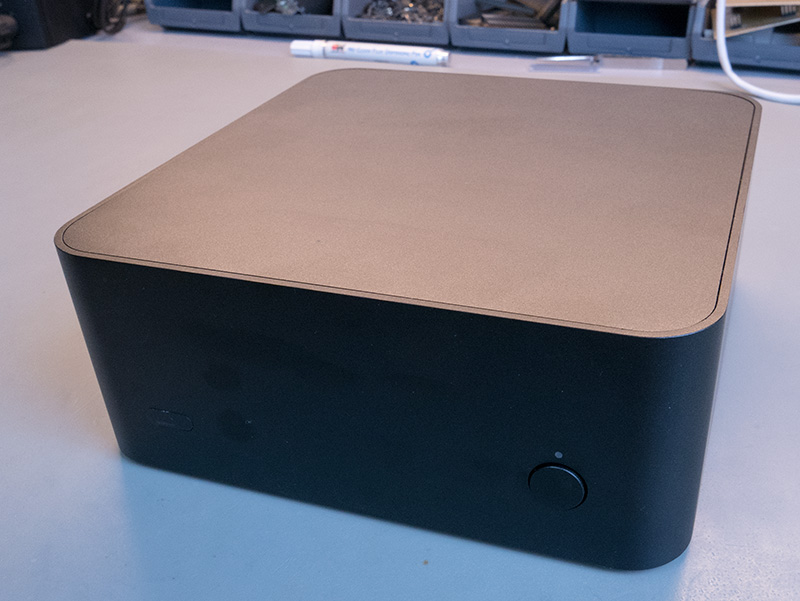
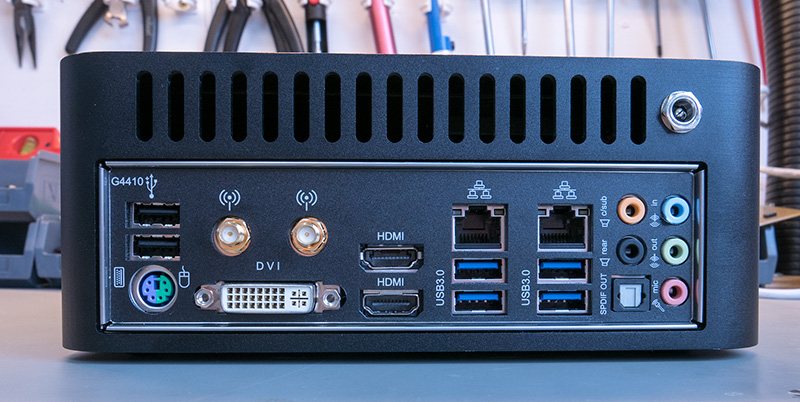
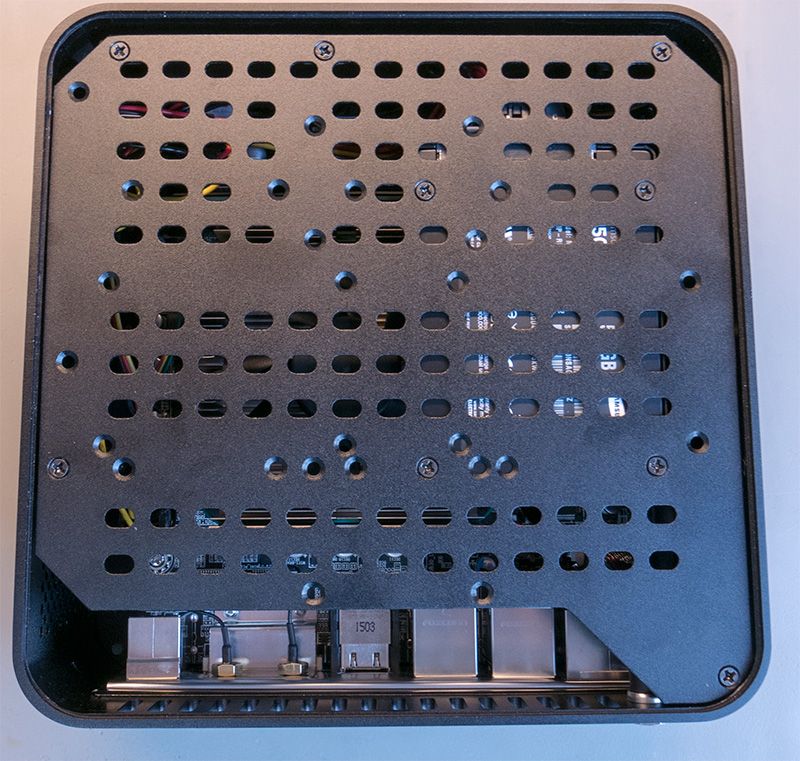
We soon found that when the CPU was running with multiple applications the internal fan would quickly spin up to full speed which was very loud and could be heard over the sound of our pick-and-place machine working! The fan also drowned out the output from the SDR receiver which made the machine useless for use with the radio unless we had the speakers turned up very loud.
The processor cores were running over 95 degrees with the CPU usage only at around 50% and we didn’t want to run the CPUs any harder to avoid any overheating issues.
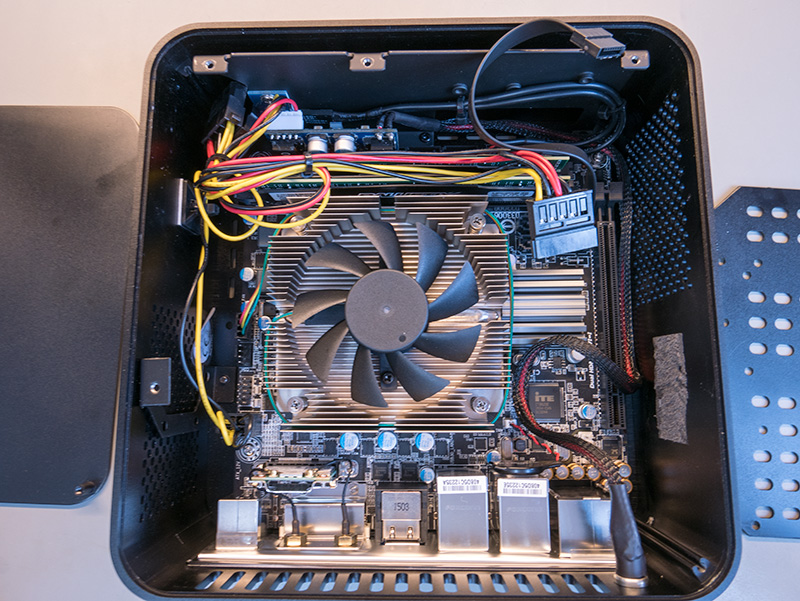
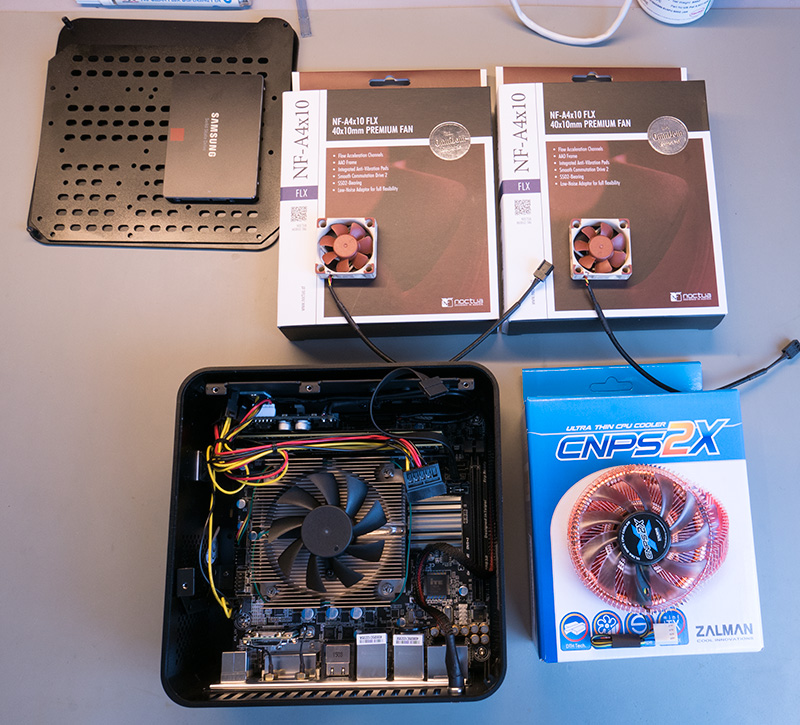
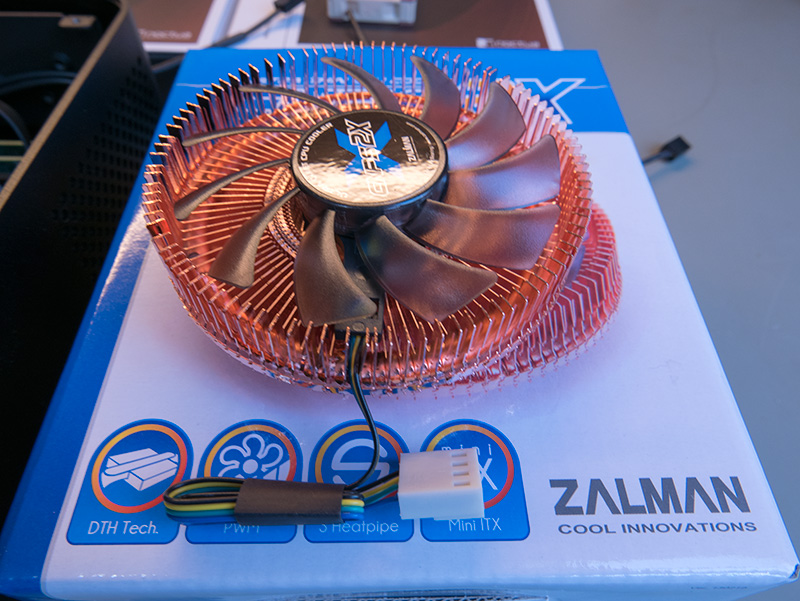
The case didn’t have any internal fans to provide airflow across the motherboard and so we tried fitting a 40mm fan on one side of the case to bring cooler air in from outside and across the heatsinks. This helped to drop the temperature by around 10 degrees but the processor fan was still running at full speed.
We found a low-profile copper heatsink from Zalman, model CNPS2X which is rated for up to a 120W CPU. We ordered the new heatsink from amazon and we also ordered a pair of quiet 40mm Noctua fans from QuietPC
The Zalman CNPS2X fan came with a variety of mounting brackets but due to the small size of the motherboard, we found that the supplied mountings wouldn’t fit due to clearances on the CPU holder and retaining plates.
We had to use the original mounting bolts and fit the heatsink brackets upside down and they would then fit onto the original bolts and hold the heatsink on the processor.
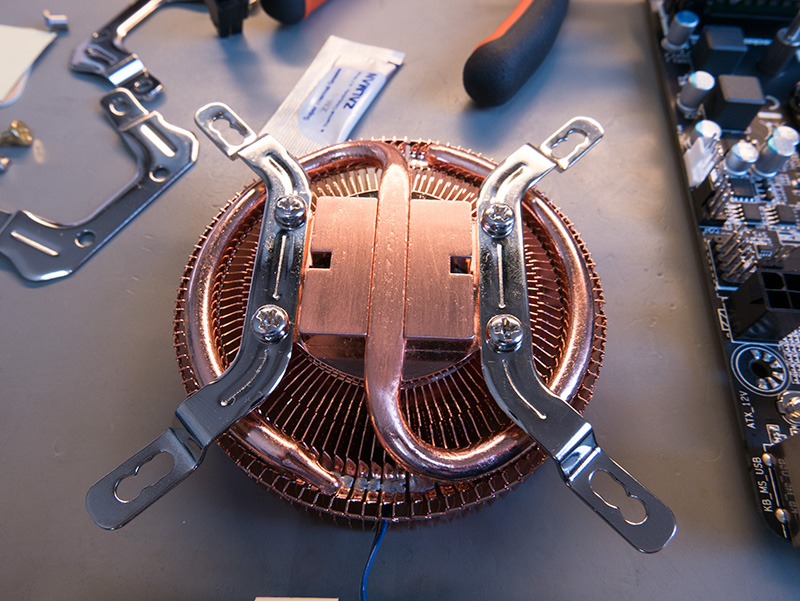
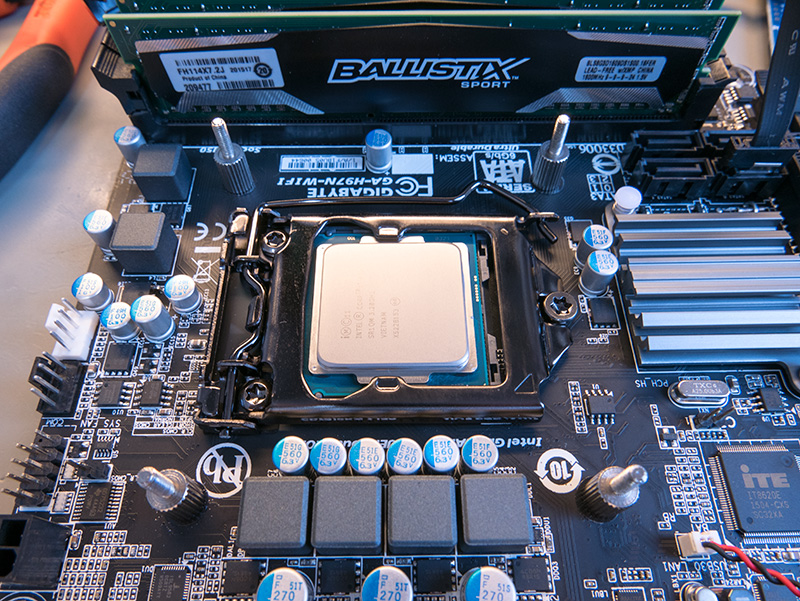
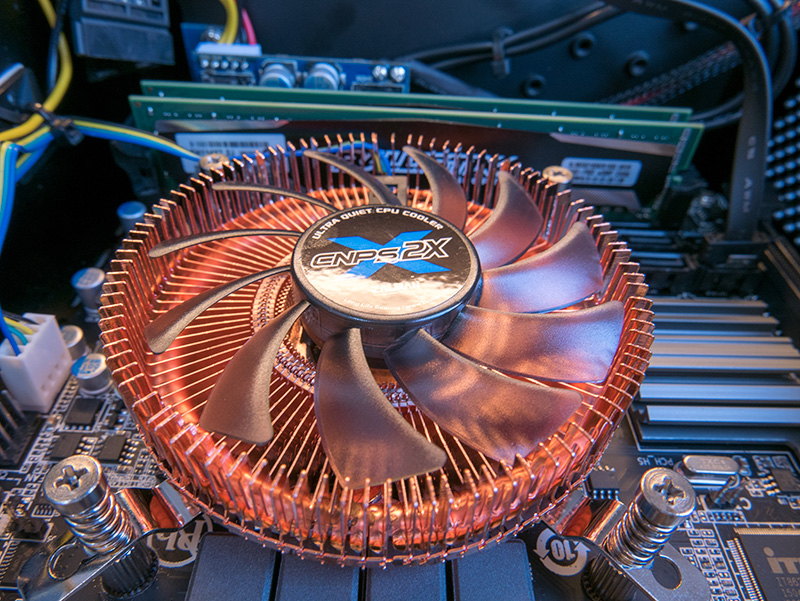
The case had a small metal bracket on one side which allowed us to fit one of the 40mm fans in the case without having to make any modifications and we decided to try running the computer with a single inlet fan to see if it would keep the temperatures under control.
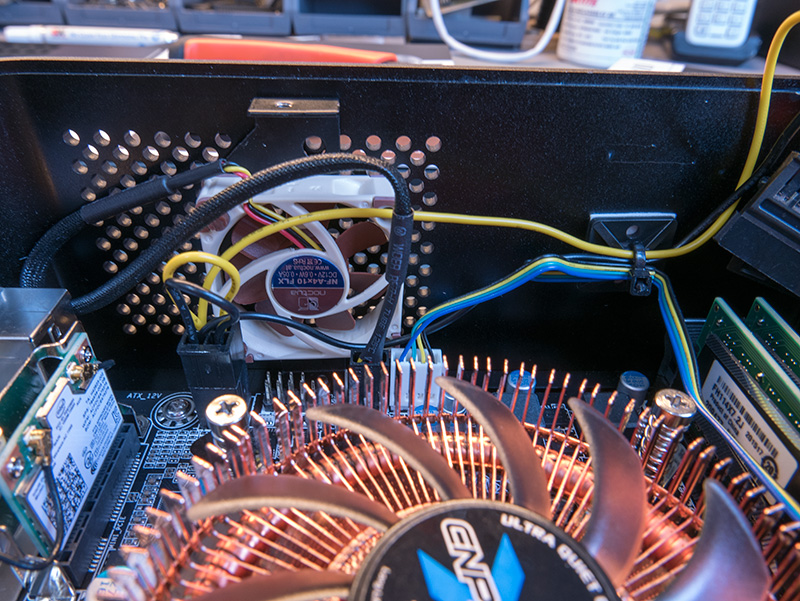
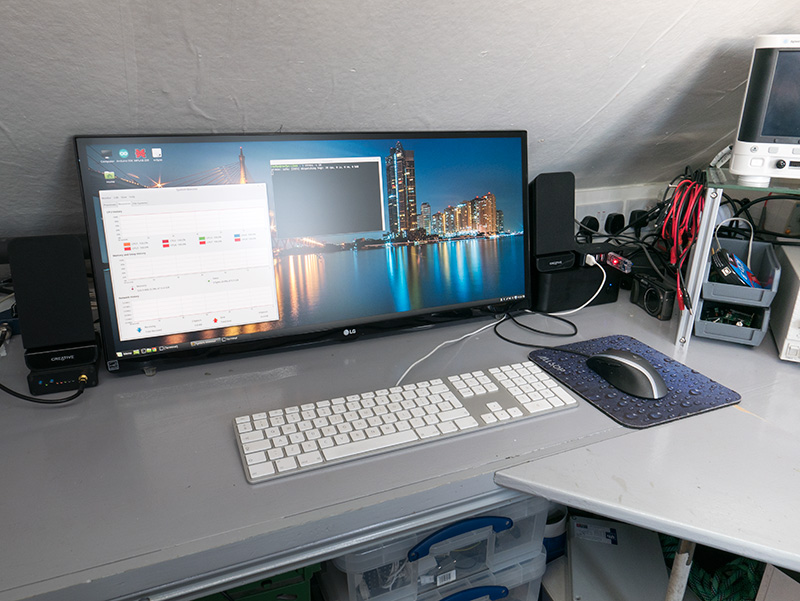
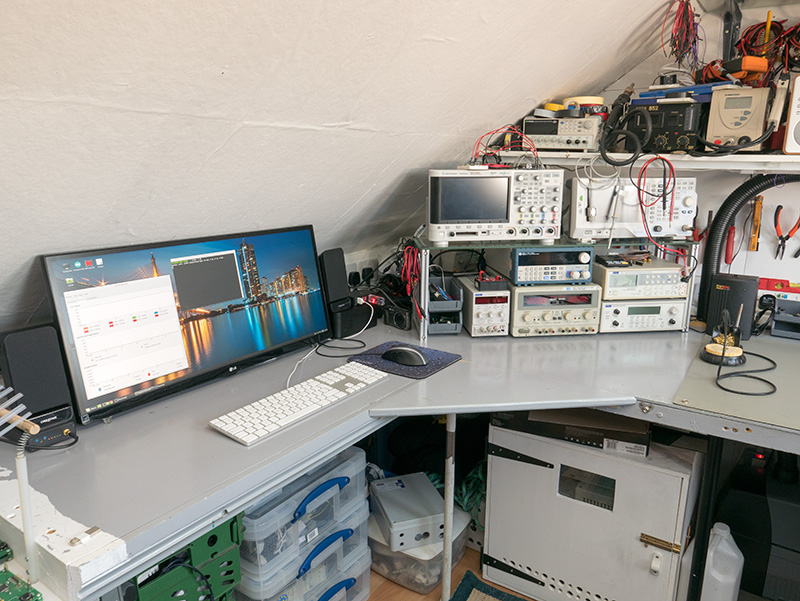
After reassembling the computer, we ran tests with the new fans under Linux Mint and used the “sensors” command to show the temperature of each of the processor cores when under normal load running the SDR software and playing a YouTube video. We also used a stress testing program which put all the cores to 100% usage for a few minutes.
The new quiet fans have made a big difference in the noise levels from the computer and with both running at 100% speed they are much quieter than the supplied computers fan/heatsink.
The screenshots below will open full size in a new window and show the CPU usage and core temperatures.
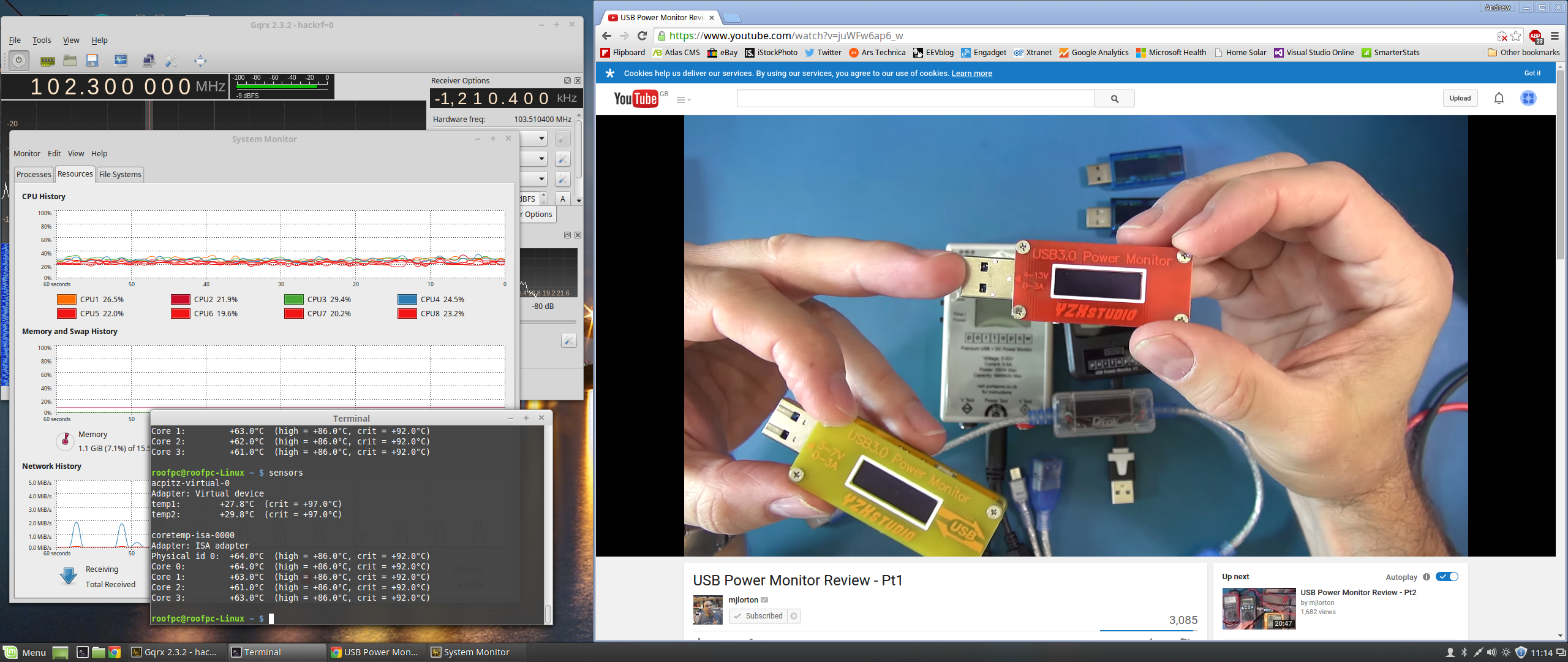
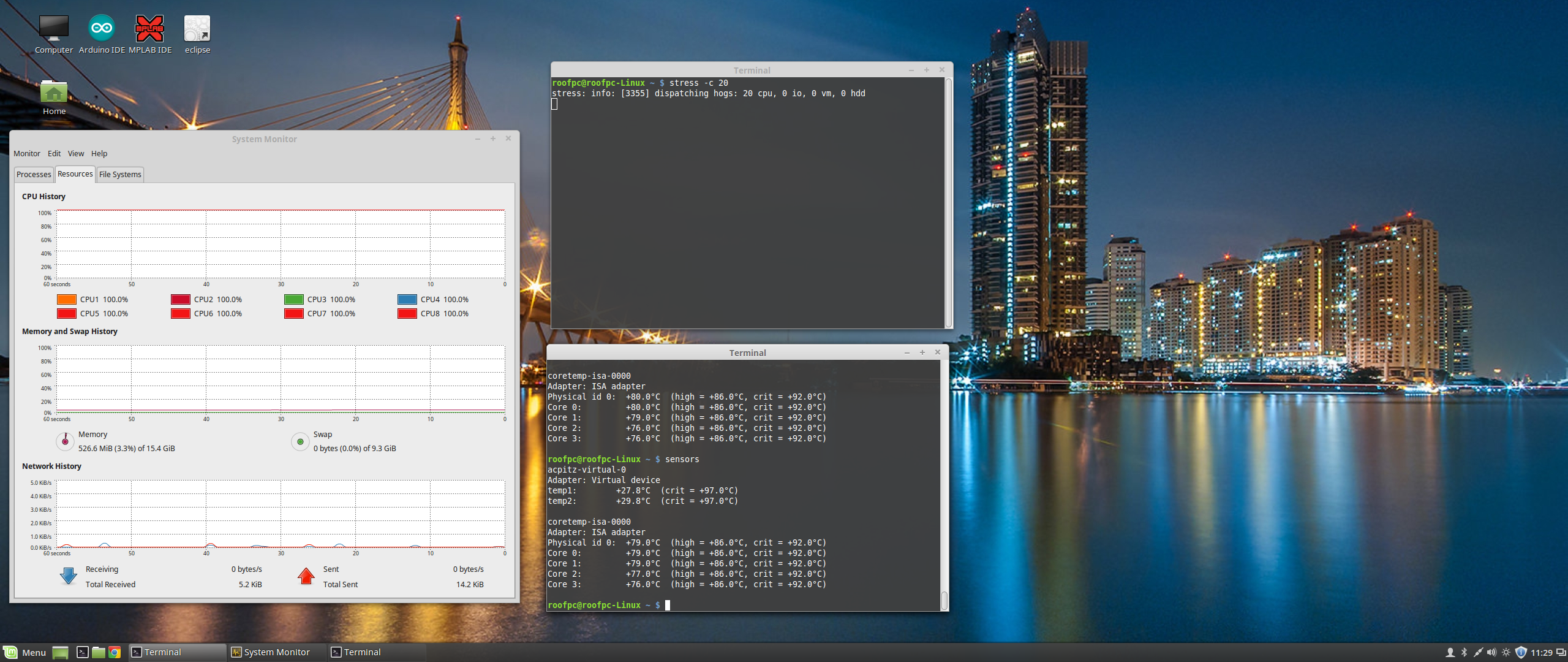

Comments